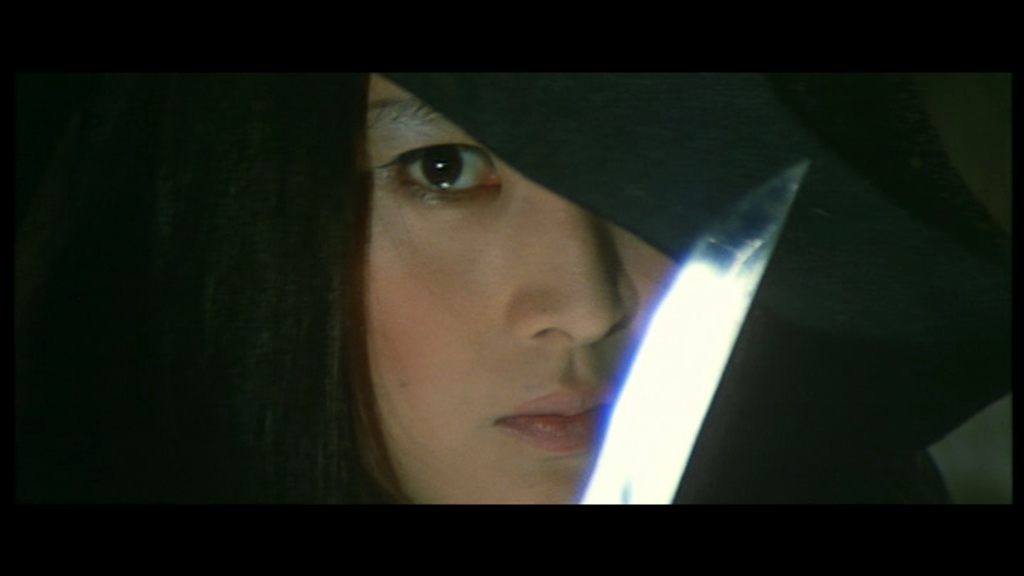 This review is x-posted to Ancient Worlds
This review is x-posted to Ancient WorldsOne night last year, I was lazily changing channels until I chanced upon a movie that seemed completely unfamiliar, the only obvious thing being that it was Japanese and from the 70s. I didn't bother to look it up immediately: had I done so, I would have found out that I had started watching an exploitation/women in prison movie, Female Prisoner #701 - Jailhouse 41. And it's a good thing I didn't as, while I had never fully watched a WiP movie before, I was familiar enough with the concept to know what to expect: violence and naked bits, especially women's, sex and torture, not necessarily mutually exclusive. Things that, when thrown in together, aren't necessarily my cup of tea
But I didn't so I gave the movie a chance and by the time, quite early into the film, I had figured what kind of movie it was, I didn't care anymore anyway
Because I was hooked. Simple as that
By the time it was over, I knew that not only would I want to see it again, but I would also want to see the others in the series. So I got myself the French digipack which includes all six movies: it's extremely light on extras, but for the price (around $60 - that is $10 per movie!), I don't find it in me to complain about it. Also, at least as far as this episode is concerned, the image quality is very good: given the fact that the four first movies have now more than 30 years, it is obvious they were restored, and I would imagine the depth of color might not be completely faithful to the original vision of the director and cinematographer, but I don't think it detracts from the movie in any way. The sound didn't fair too bad either
 So it's in good conditions and pretty high spirits that I started with the beginning, namely Female Prisoner #701 - Scorpion, which tells us how the main protagonist, Nami Matsushima (Kaji Meiko), an apparently nice and rather shy girl, is used by the man she had fallen in love with, corrupt police inspector Sugimi (Natsuyagi Isao), in a plan that badly backfires for her. Sugimi doesn't hesitate one moment between money and his girlfriend and Nami, having just been abused by a gang of Yakuza, is left on her own. Betrayed and humiliated, she seeks revenge, attacking Sugimi with a knife in broad daylight and on the steps of the police headquarters. As expected though her attack fails and she finds herself arrested and sent to jail
So it's in good conditions and pretty high spirits that I started with the beginning, namely Female Prisoner #701 - Scorpion, which tells us how the main protagonist, Nami Matsushima (Kaji Meiko), an apparently nice and rather shy girl, is used by the man she had fallen in love with, corrupt police inspector Sugimi (Natsuyagi Isao), in a plan that badly backfires for her. Sugimi doesn't hesitate one moment between money and his girlfriend and Nami, having just been abused by a gang of Yakuza, is left on her own. Betrayed and humiliated, she seeks revenge, attacking Sugimi with a knife in broad daylight and on the steps of the police headquarters. As expected though her attack fails and she finds herself arrested and sent to jail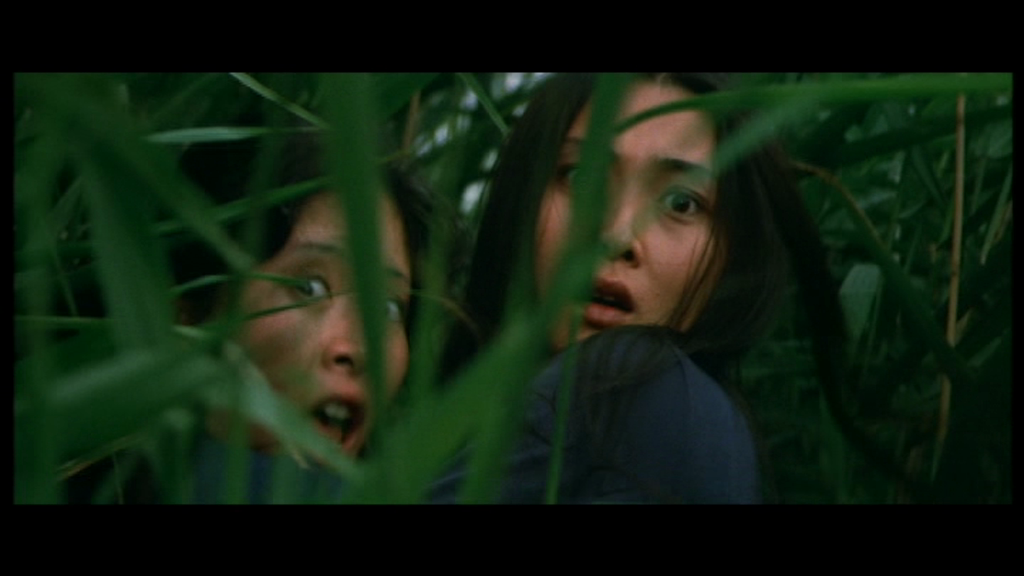 These events are actually told in a flashback early on. The movie itself begins with Matsu, as she is usually called in the prison, and fellow inmate Yuki, attempting to escape. They are caught, however, and put in individual cells where they lie tied up on the ground, at the mercy of the guards and the no less sadistic prison trustees. As the head of the wardens uses the occasion to impose punishment on all inmates, the resentment against Matsu grows among the women just as her resilience and silent stubbornness only serve to infuriate the prison wardens even further as all their attempts to break her fail. As tension escalates, only compounded by Sugimi's scheme to have Matsu assassinated by fellow inmate Katagiri, it isn't difficult to tell that the situation is about to get out of hand....
These events are actually told in a flashback early on. The movie itself begins with Matsu, as she is usually called in the prison, and fellow inmate Yuki, attempting to escape. They are caught, however, and put in individual cells where they lie tied up on the ground, at the mercy of the guards and the no less sadistic prison trustees. As the head of the wardens uses the occasion to impose punishment on all inmates, the resentment against Matsu grows among the women just as her resilience and silent stubbornness only serve to infuriate the prison wardens even further as all their attempts to break her fail. As tension escalates, only compounded by Sugimi's scheme to have Matsu assassinated by fellow inmate Katagiri, it isn't difficult to tell that the situation is about to get out of hand....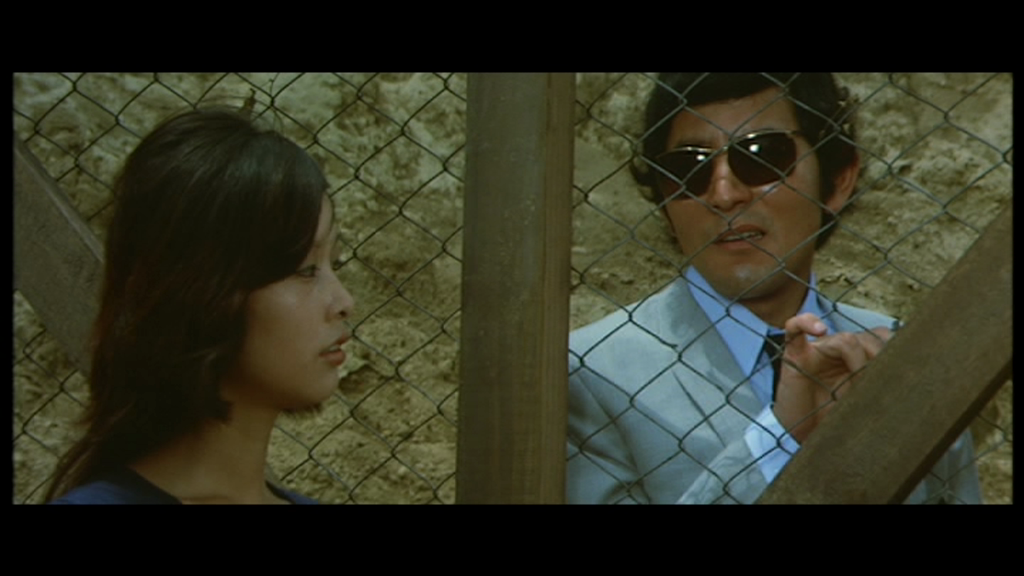 The plot isn't the movie's strongest point, although it is decent enough and does work adequately as the background layer on which the more interesting and successful aspects of the movie are laid. Firstly, it is, undeniably, a feast for the eyes. Pinky movies were typically done on a shoestring budget, and here it shows, but somehow Ito manages to transcend that and make it a strength, rather than a hindrance: the scene of Nami's first time and the transition to the sting operation are great examples of that. You couldn't have done it with less props and in less time, yet it tells you all you need: a four-posted bed and candles would hardly have made the scene more interesting, quite the contrary in fact.
The plot isn't the movie's strongest point, although it is decent enough and does work adequately as the background layer on which the more interesting and successful aspects of the movie are laid. Firstly, it is, undeniably, a feast for the eyes. Pinky movies were typically done on a shoestring budget, and here it shows, but somehow Ito manages to transcend that and make it a strength, rather than a hindrance: the scene of Nami's first time and the transition to the sting operation are great examples of that. You couldn't have done it with less props and in less time, yet it tells you all you need: a four-posted bed and candles would hardly have made the scene more interesting, quite the contrary in fact.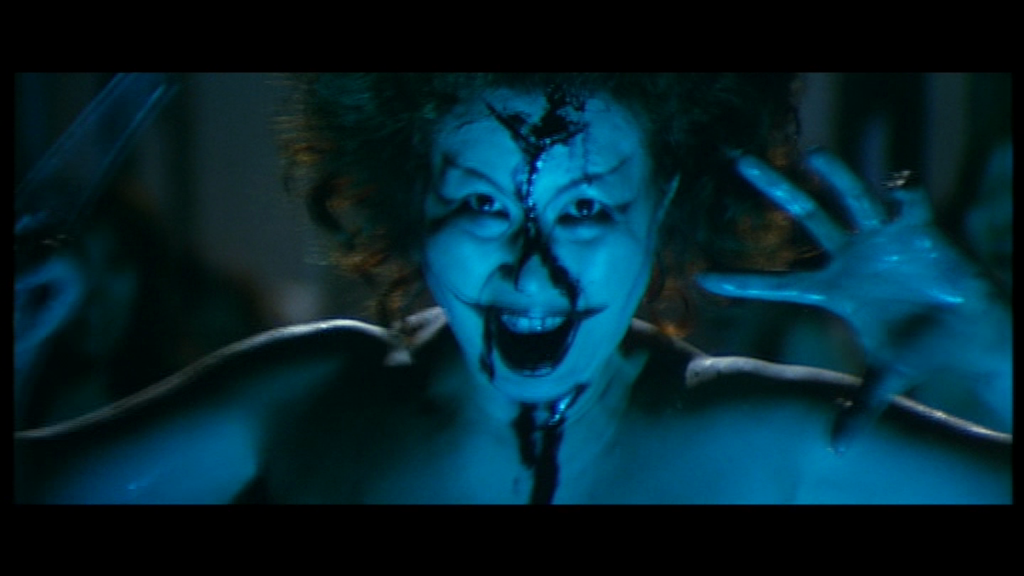 It is hard also to believe it was Ito's first movie (almost as hard as it is to believe Ito has done so few movies since!): no scene is left to waste. At every turn, he will find an angle or come up with a device to turn every moment of this movie into as many visual pearls, helped in that by the excellent cinematography of Nakazawa Hanjiro. Every shot is powerful, from the lush greens of the vegetation as Matsu and Yuki are trying to escape, to Matsu's return to prison after having achieved her revenge. What's more, many of them do add to the story, instead of just being exercises in style, even if, when you're watching this for the first time, some might seem absurd: that's true of the more psychedelic visuals, very much anchored in their time (the "transformation" of Nami into Scorpion as she lies on the floor after having discovered Sugimi's treachery) just as much as it is of those which, in the contrary, transcend it (trustee Masaki who, in her rage, ironically resembles a Kabuki character; interestingly, this reference to traditional Japanese theatre will be taken one step further in "Jailhouse 41")
It is hard also to believe it was Ito's first movie (almost as hard as it is to believe Ito has done so few movies since!): no scene is left to waste. At every turn, he will find an angle or come up with a device to turn every moment of this movie into as many visual pearls, helped in that by the excellent cinematography of Nakazawa Hanjiro. Every shot is powerful, from the lush greens of the vegetation as Matsu and Yuki are trying to escape, to Matsu's return to prison after having achieved her revenge. What's more, many of them do add to the story, instead of just being exercises in style, even if, when you're watching this for the first time, some might seem absurd: that's true of the more psychedelic visuals, very much anchored in their time (the "transformation" of Nami into Scorpion as she lies on the floor after having discovered Sugimi's treachery) just as much as it is of those which, in the contrary, transcend it (trustee Masaki who, in her rage, ironically resembles a Kabuki character; interestingly, this reference to traditional Japanese theatre will be taken one step further in "Jailhouse 41")Another great strength of the director is his ability to simultaneously embrace the Pinky genre, all the while turning many of its concepts on their heads(once very literally as the scene unfolds upside down). Most WiP standards are present: naked women, sadistic wardens, lesbian scenes, violence with fountains of bright red blood, torture, bondage....no really, I don't think he missed a single one of them. Which doesn't come as a surprise, after all, as it is exactly what the Toei wanted. But they never quite turn out to be what we expect either. Sadistic wardens also turn out to be impotent, their batons having to substitute for their sexes when they want to abuse Matsu as she is tied up in her cell. On the other hand, when given a chance, the prisoners will have little problem to collectively abuse their jailers by using their bodies, in an almost surreal scene: joyous, with the women not in on the action rhythmically chanting and moving their feet and arms, mimicking what could pass for a ritual dance of old
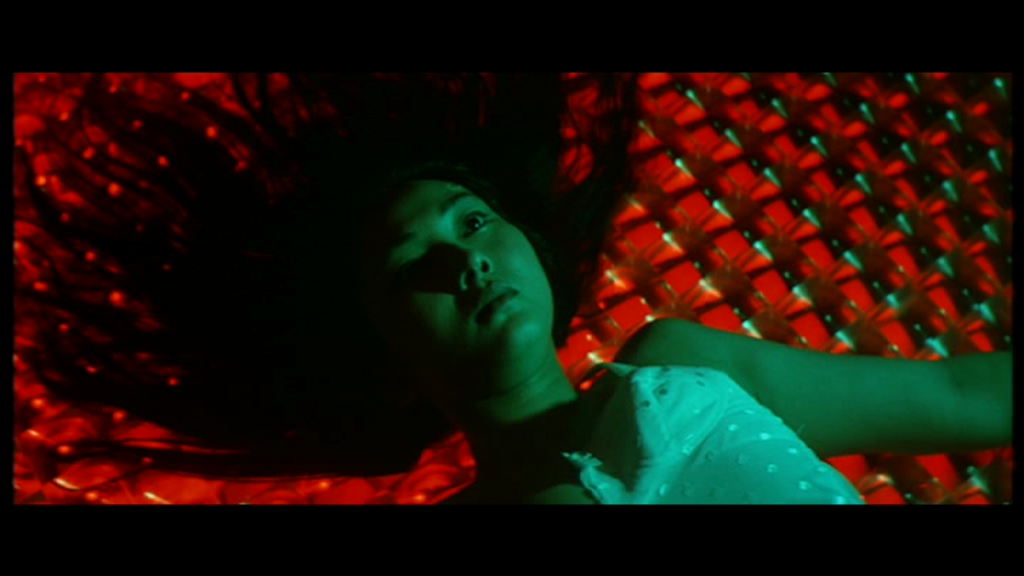 It comes in complete contrast with the scene of Nami's rape by the Yakuza gang: the most we get to see is a breast at the beginning, the rape itself being shot from under Nami's shoulders as she lies on a transparent, glass-like surface. All we see are the grotesque expressions on the yakuzas' faces; colors and sounds both are muted. Together though, these particularities are exactly what makes this scene stand out and it turns out to be surprisingly disturbing. It is a credit to the director not to make rape banal or even erotic in the slightest, which one would have expected from that kind of movies
It comes in complete contrast with the scene of Nami's rape by the Yakuza gang: the most we get to see is a breast at the beginning, the rape itself being shot from under Nami's shoulders as she lies on a transparent, glass-like surface. All we see are the grotesque expressions on the yakuzas' faces; colors and sounds both are muted. Together though, these particularities are exactly what makes this scene stand out and it turns out to be surprisingly disturbing. It is a credit to the director not to make rape banal or even erotic in the slightest, which one would have expected from that kind of moviesThe "obligatory-lesbian-scene" also is a case in point. You can tell from the lack of impact on the main storyline that this is nothing more than an interlude, that it was added as an afterthought, because you have to have one. Although that makes it one of the least interesting scenes in the whole movie, it is saved however by the way Matsu acts and is being filmed. Even though she initiates the move, she is never overcome by passion; in fact, it is hard to tell if she derives any pleasure from it. What she does is move slowly and meticulously not unlike, one might suggest, a predatory animal, an obvious reference to her "Scorpion" nickname. But in this case, her sting is not so much lethal as it is paralyzing, probably because she's recognized her prey as not being a threat as much as it is a pawn in her enemies' hands
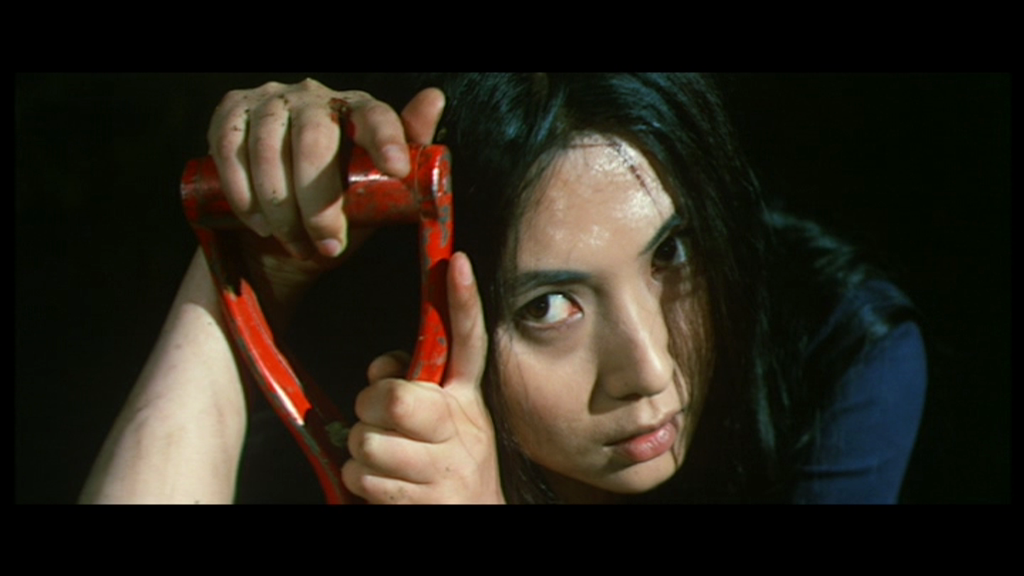 Of course, for this scene to be credible, you'd need an able actress. Only Kaji is not just an able actress. In fact, her performance goes beyond the notions of "bad" and "good". She just owns the role completely, in a way few other actresses have, managing to make it appealing to both men - her undeniable beauty and sex-appeal - and women - as an avenger of all the wrongs society have committed, and continues to commit, against us. You therefore cannot help but forgive the director for including her in just about every scene, and for the many, many close-ups on her face, and most importantly, her gaze. Matsu never speaks much, although she does utter a few sentences (much more than in the following installment in the series), but her eyes do all the talking, making her presence menacing even though she's, after all, a slender woman without extraordinary physical strength. Her only power lies in her resilience and ability to set her goals and withstand what she has to in order to get there
Of course, for this scene to be credible, you'd need an able actress. Only Kaji is not just an able actress. In fact, her performance goes beyond the notions of "bad" and "good". She just owns the role completely, in a way few other actresses have, managing to make it appealing to both men - her undeniable beauty and sex-appeal - and women - as an avenger of all the wrongs society have committed, and continues to commit, against us. You therefore cannot help but forgive the director for including her in just about every scene, and for the many, many close-ups on her face, and most importantly, her gaze. Matsu never speaks much, although she does utter a few sentences (much more than in the following installment in the series), but her eyes do all the talking, making her presence menacing even though she's, after all, a slender woman without extraordinary physical strength. Her only power lies in her resilience and ability to set her goals and withstand what she has to in order to get there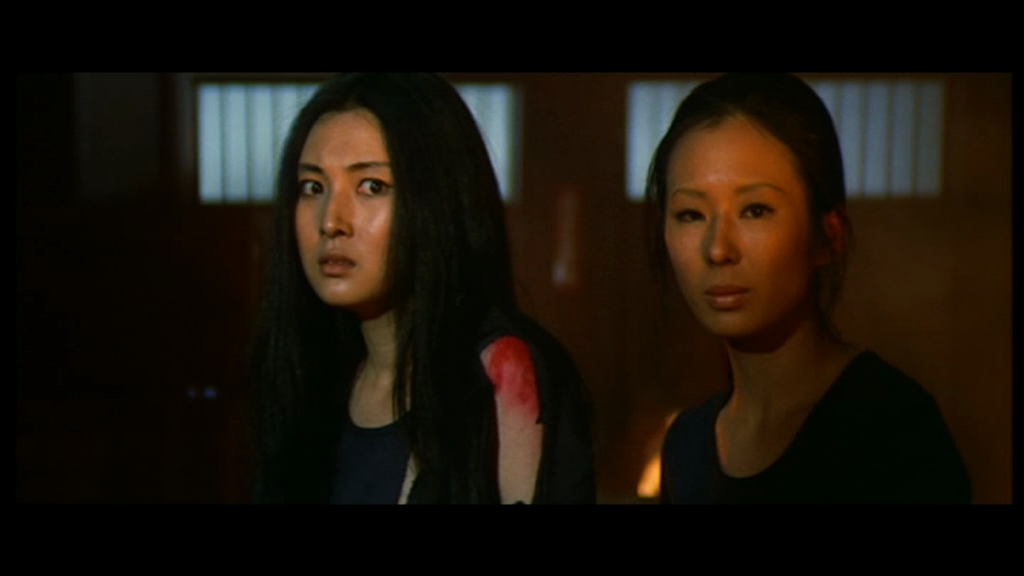
There are many more aspects of this movie that would deserved to be discussed and expended upon, in particular the implications regarding Japanese society, and, to some extent, developed countries societies as a whole, in the 70s and beyond: the use and abuse of women as a work- and life force, their instrumentalization (the stain of blood on the white sheet, a result of Nami's defloration, taking the shape of the Japanese flag before becoming diformed, related to the Japanese flag floating at the beginning and conclusion of the movie and to the banner outside the building at the top of which seat the Yakuza boss and Sugimi); the development of post-war, industrial society as one devoid of humanity, and which ultimately "devours" those that make it (forced-labor consisting of repetitively digging the ground only to fill the holes again right after; the symbolic burial of Matsu by the other inmates when she stands alone in the trench)
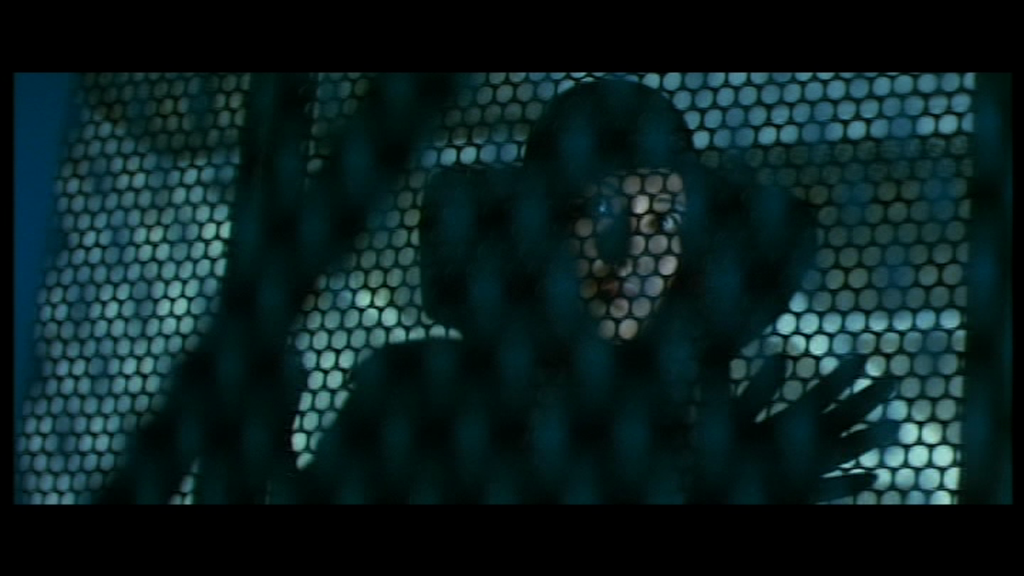 But at the end of the day, "Female Prisoner #701 - Scorpion" is more about an experience for the senses and the mind than it is about words. It is definitely not suitable for children, and the faint of heart may want to give it a miss too. As for everyone else, don't let its Pinky/WiP affiliation fools you, although it is in part the very use - and diversion - of the codes of the genre that makes it both a delectable guilty pleasure and a great and unique movie
But at the end of the day, "Female Prisoner #701 - Scorpion" is more about an experience for the senses and the mind than it is about words. It is definitely not suitable for children, and the faint of heart may want to give it a miss too. As for everyone else, don't let its Pinky/WiP affiliation fools you, although it is in part the very use - and diversion - of the codes of the genre that makes it both a delectable guilty pleasure and a great and unique movie